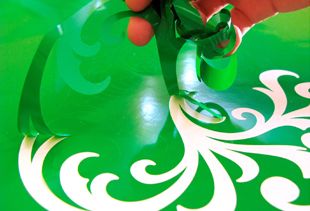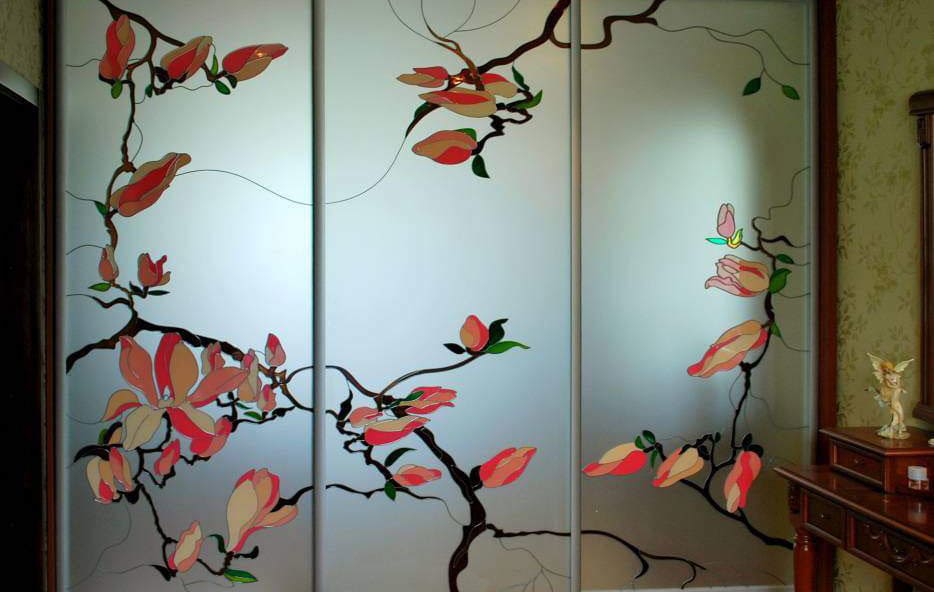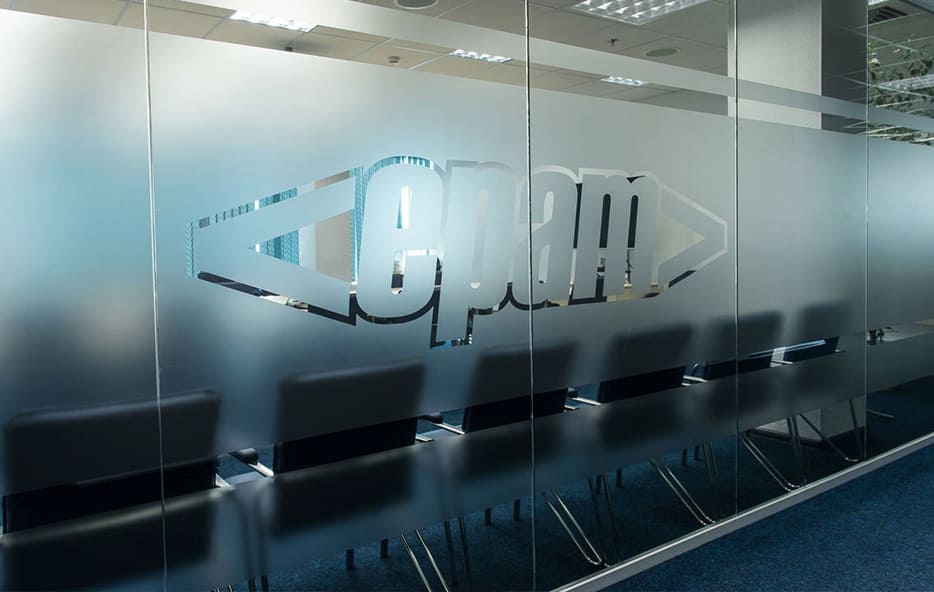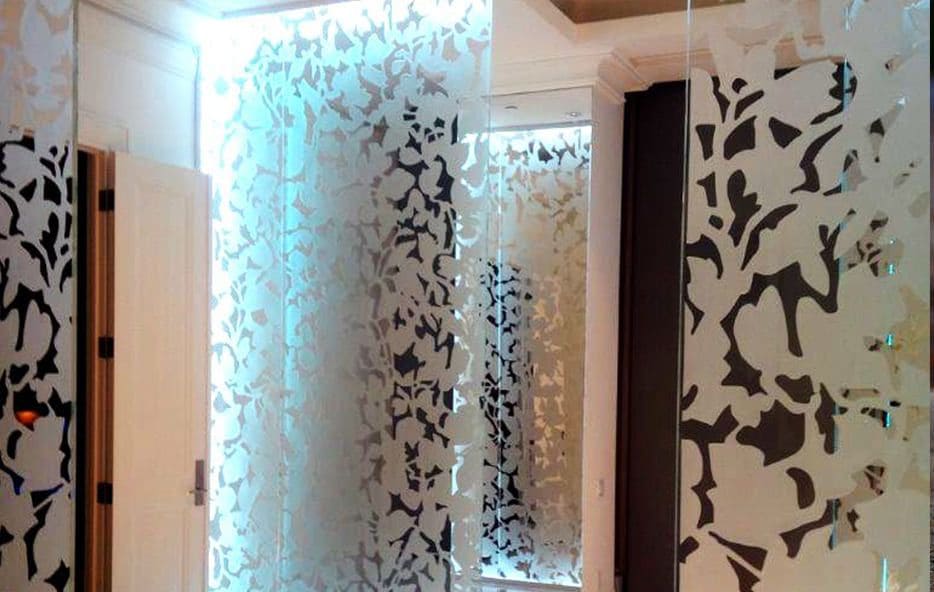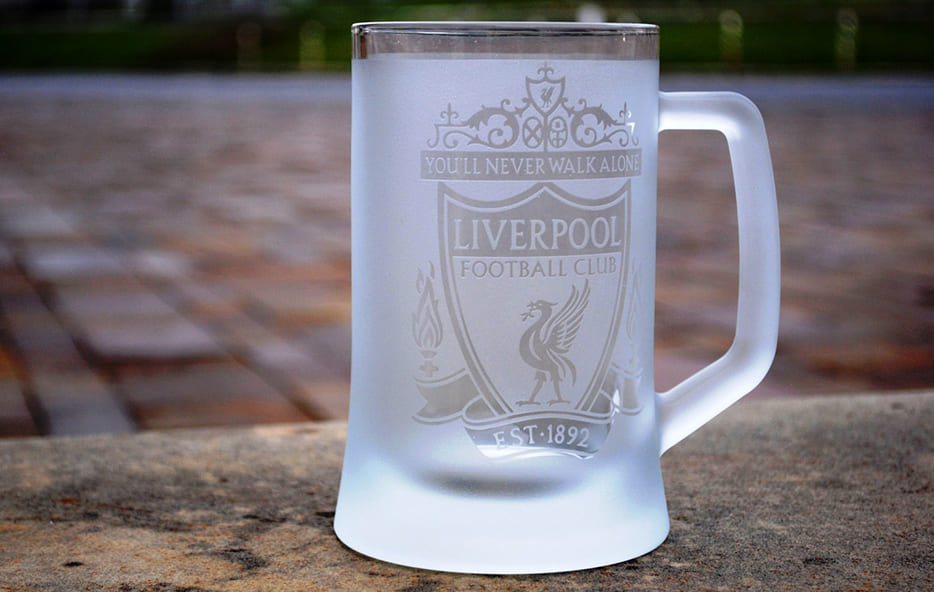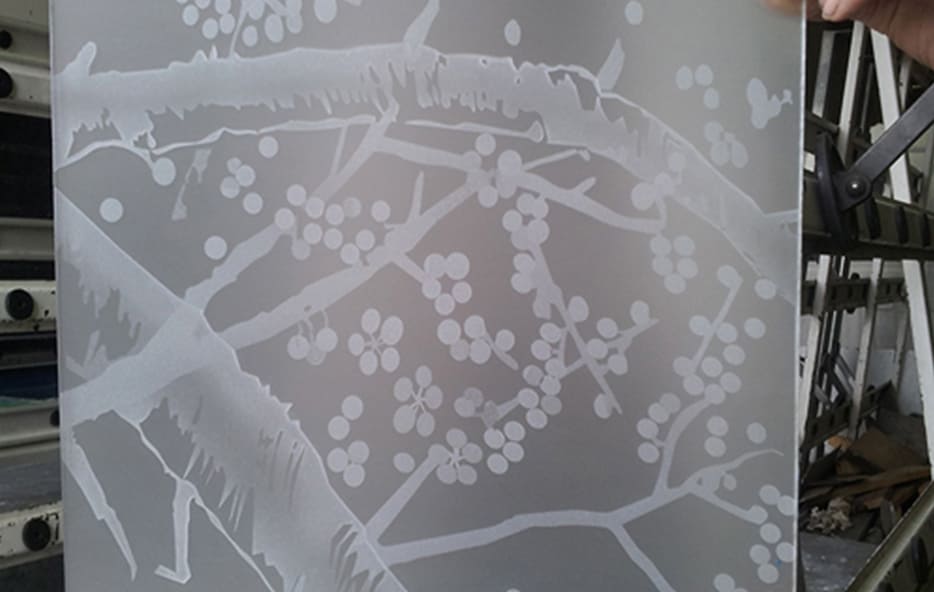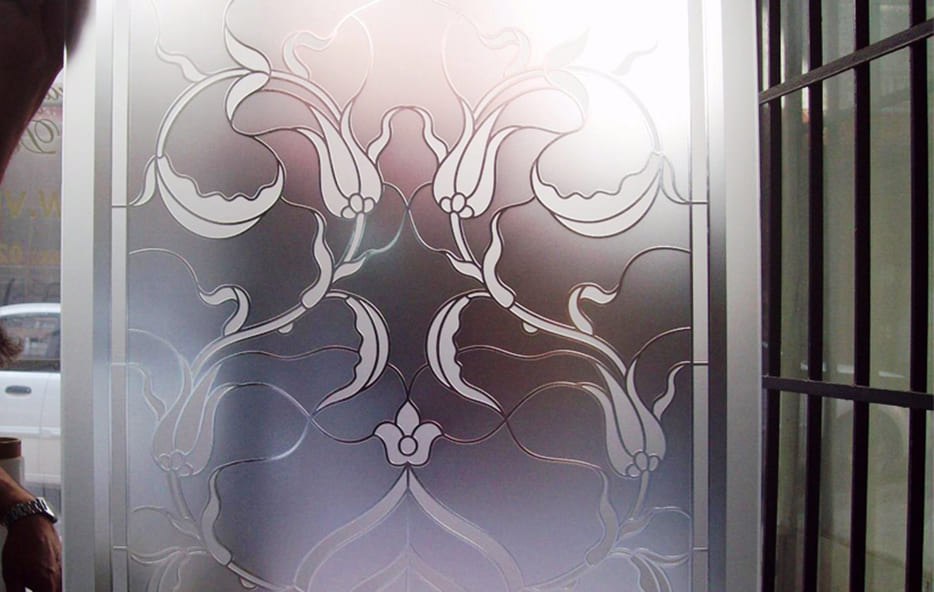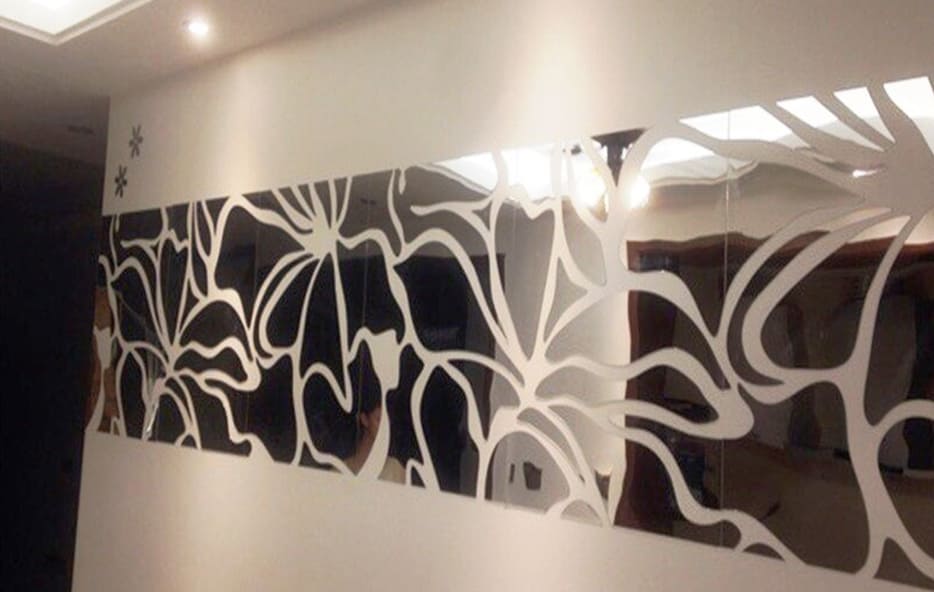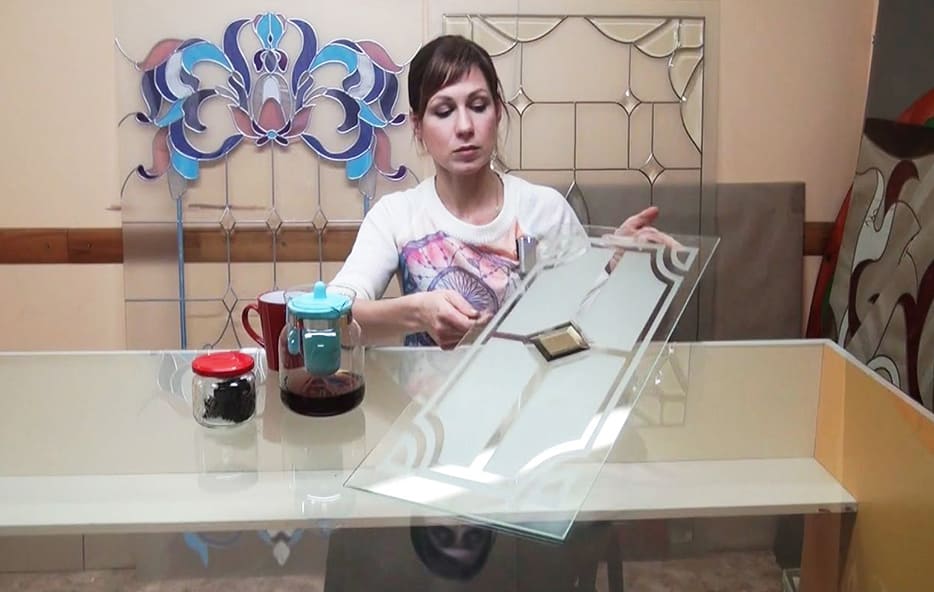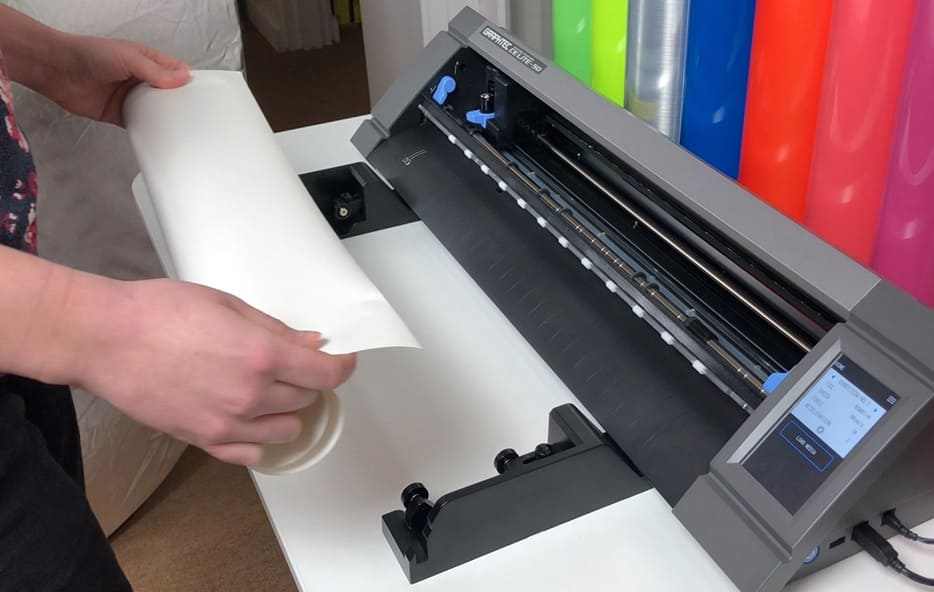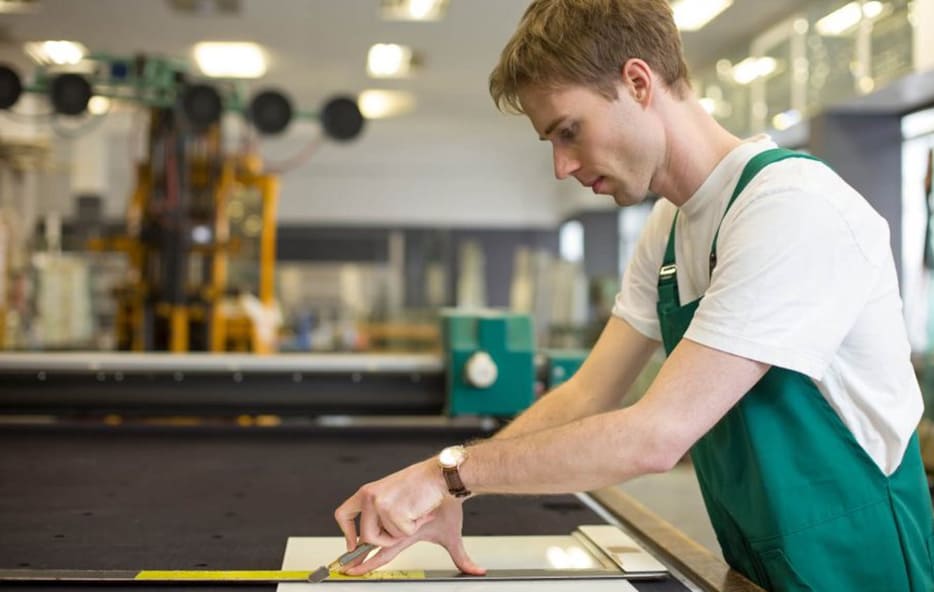Stencil secrets
What you need to know to make high-quality matted glass.
Using paste for etching glass, you can create a truly artistic product, looking at what no one would ever have thought of. Amazingly, all this beauty was created by an ordinary person at home, and not a professional, without the use of nanotechnology and expensive equipment. At the end of the article are photographs of one mirror a little over a meter long. Below in the photo you see a mirror sheet prepared for matting; using glued stencil, as well as photographs of the finished product. It is worth noting that the thickness of the thinnest line (butterfly wing) does not exceed 0.4 mm! To make such an artistic product, first of all, you need to pay maximum attention to the stencil.
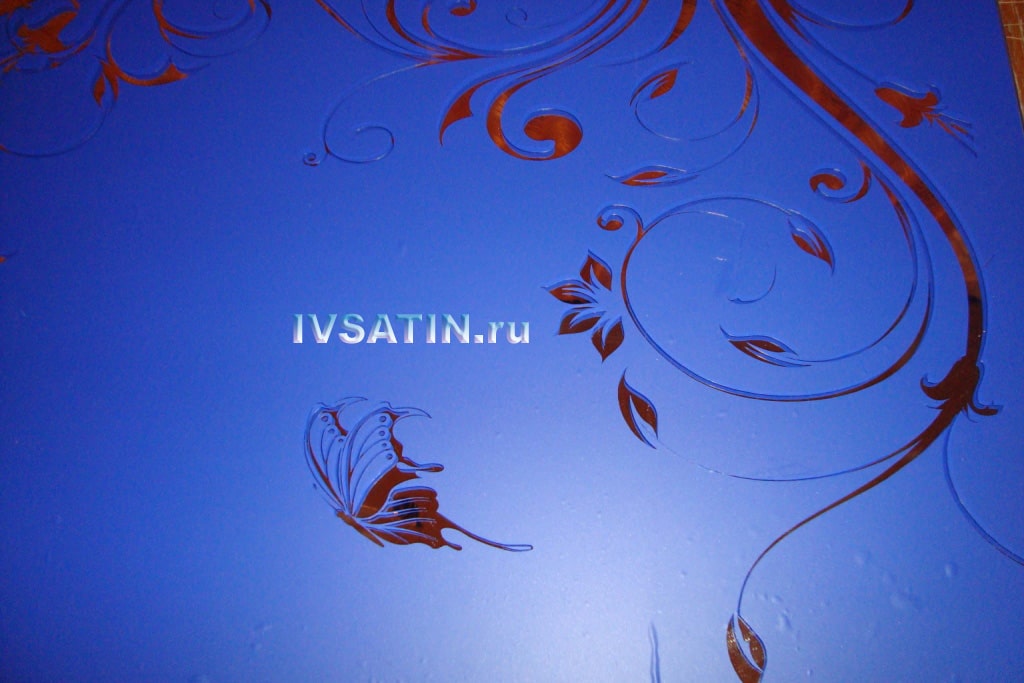
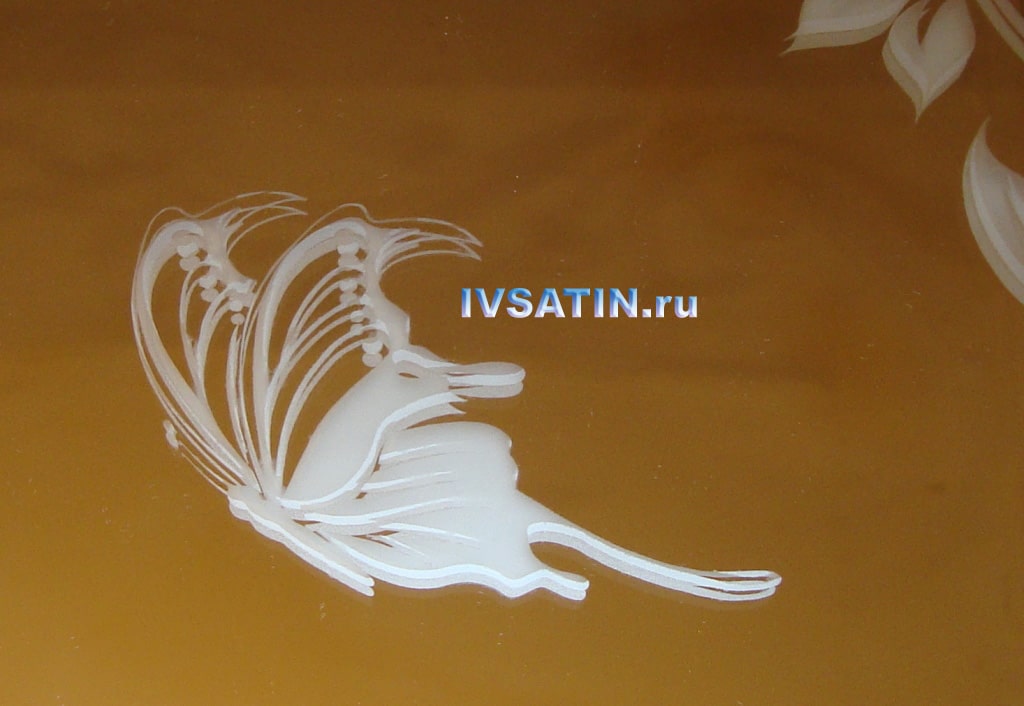
What requirements must comply with the stencil for glass etching.
For stencil, ORACAL self-adhesive film is used. The use of other similar films, for example, self-adhesive wallpaper (photo below), is unacceptable! The film for the stencil should be fresh, where it did not lie at the warehouse for six months. This can be determined quite simply: just look at the edge of the self-adhesive film.
If a white substrate is visible from under it, the adhesive layer begins to dry and compress the film. And the substrate remains the same size. As a result, the white substrate becomes visible from under the self-adhesive film.
The wider the white strip of the substrate, the more the self-adhesive film has dried. Thus, the self-adhesive film is old, and the adhesive layer is dry You do not need to take this film for critical stencils with small parts, otherwise the edges of the image will be uneven due to poor adhesion of the film, and small parts of the stencil may fall out during etching and your product will be damaged.
For stencil, ORACAL self-adhesive film is used. The use of other similar films, for example, self-adhesive wallpaper (photo below), is unacceptable! The film for the stencil should be fresh, where it did not lie at the warehouse for six months. This can be determined quite simply: just look at the edge of the self-adhesive film.
If a white substrate is visible from under it, the adhesive layer begins to dry and compress the film. And the substrate remains the same size. As a result, the white substrate becomes visible from under the self-adhesive film.
The wider the white strip of the substrate, the more the self-adhesive film has dried. Thus, the self-adhesive film is old, and the adhesive layer is dry You do not need to take this film for critical stencils with small parts, otherwise the edges of the image will be uneven due to poor adhesion of the film, and small parts of the stencil may fall out during etching and your product will be damaged.
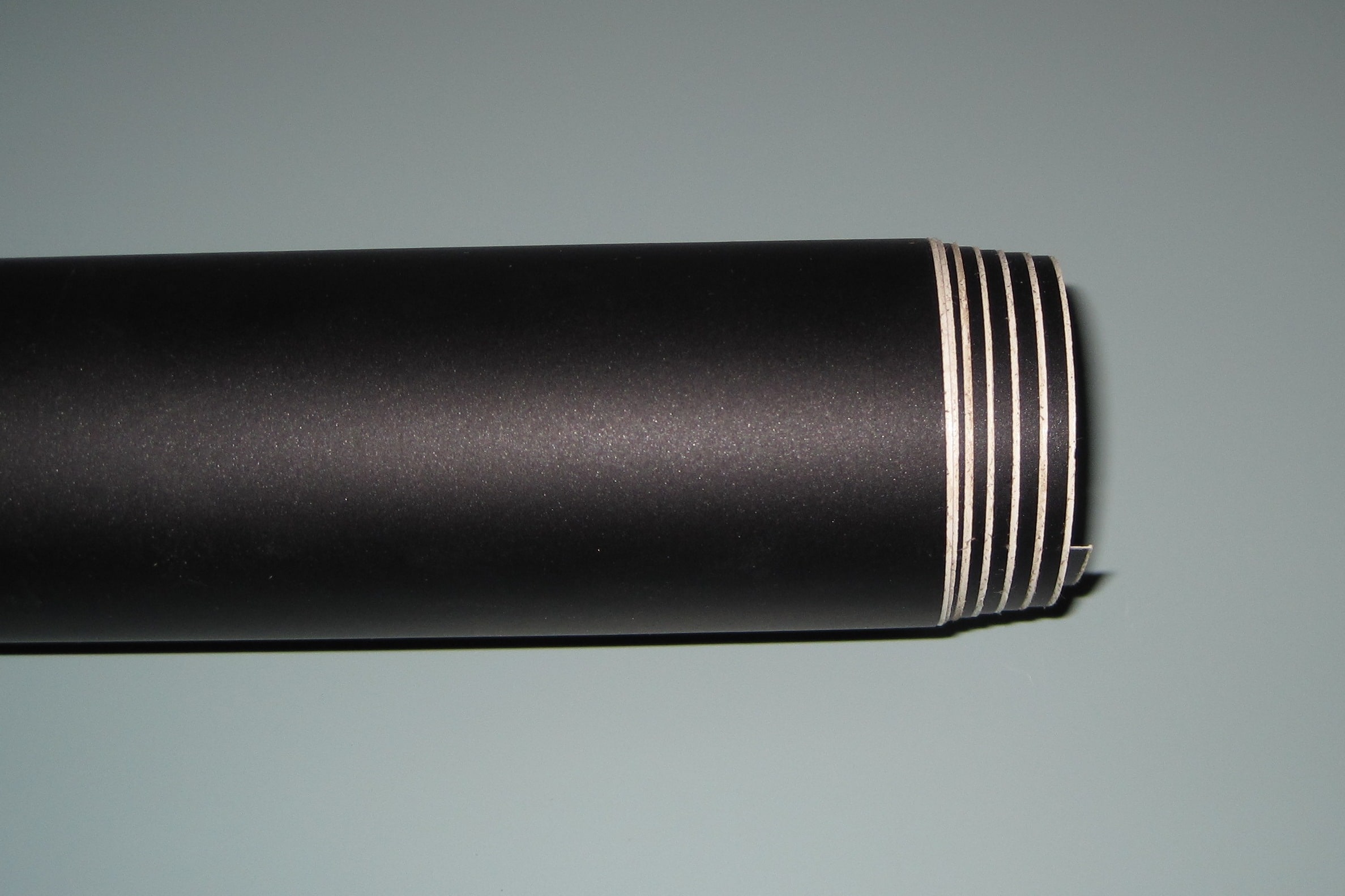
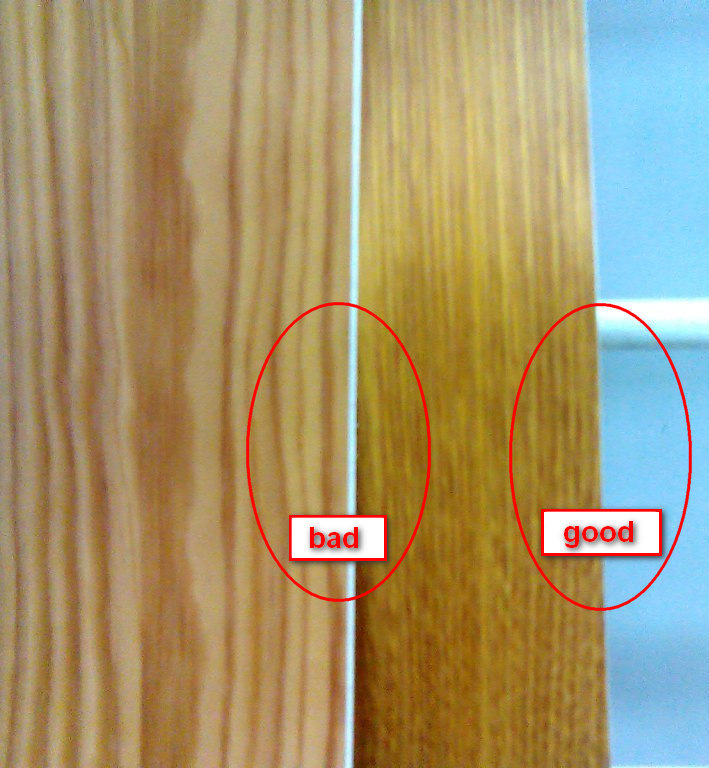
This is an old film with a dried adhesive layer; it is not suitable for stencils!
Beginners should avoid the brusque mistake when preparing the glass for matting; namely when pasting the stencil. If it is necessary to limit the matting area, and this is done using the same ORACAL self-adhesive film. No wetting materials (such as a backing made of self-adhesive material, etc.) can be used to protect exposed areas of glass: as all this can get wet and your product will be sent to landfill. In addition, in no case whatsoever should you overlap individual segments of the film on top of each other, like in the photograph.
Beginners should avoid the brusque mistake when preparing the glass for matting; namely when pasting the stencil. If it is necessary to limit the matting area, and this is done using the same ORACAL self-adhesive film. No wetting materials (such as a backing made of self-adhesive material, etc.) can be used to protect exposed areas of glass: as all this can get wet and your product will be sent to landfill. In addition, in no case whatsoever should you overlap individual segments of the film on top of each other, like in the photograph.

In places where the film overlaps between the glass and the stencil, a void forms, even in tenths of a millimeter, but this distance is enough for the matting paste to penetrate. Knowing this try to prevent the film from overlapping.
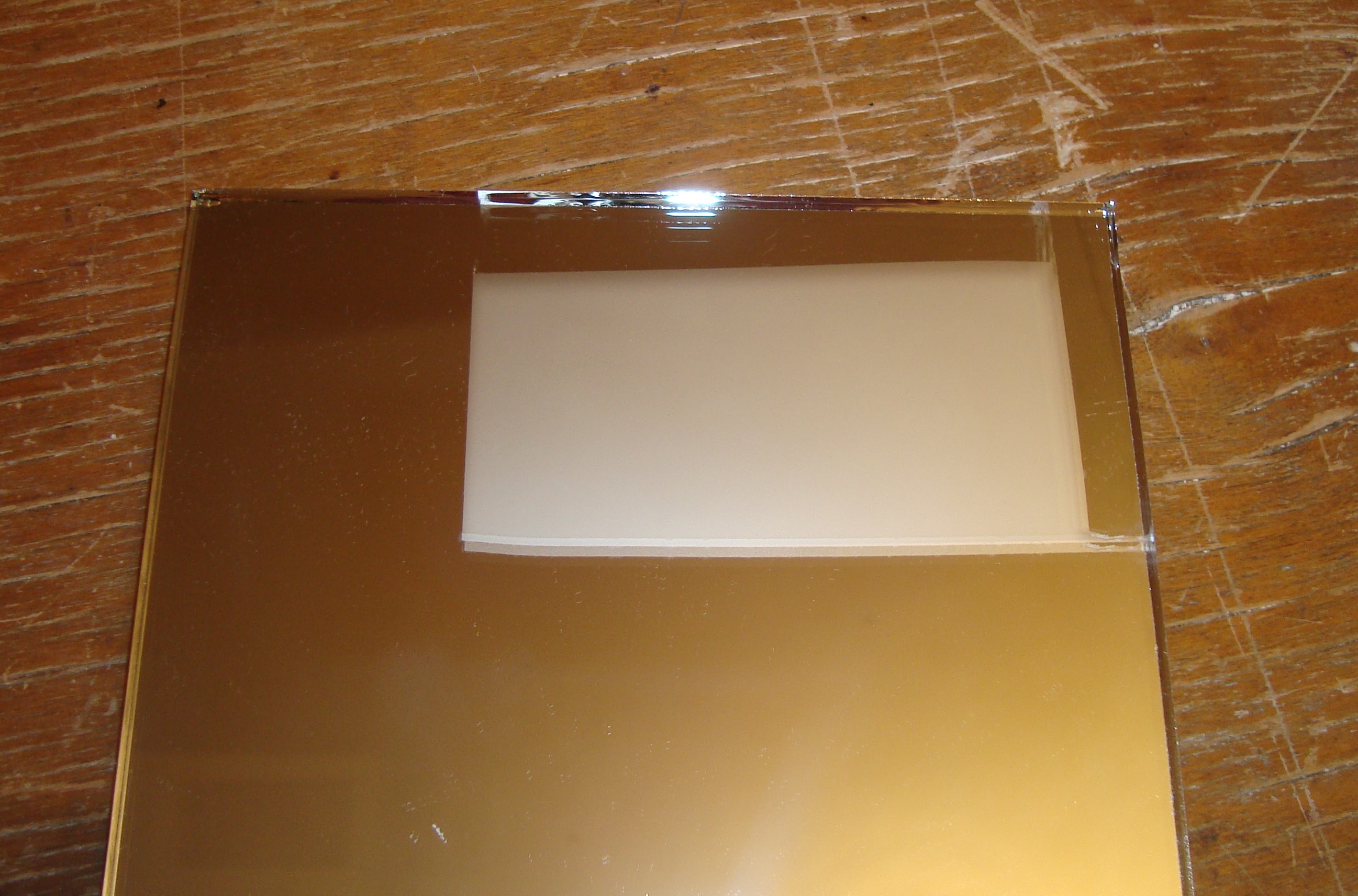
As a result of action with vapors falling into the gap at the site of the overlapping film, a frosted glass region forms in an unnecessary place. The photo shows what happens as a result.
The mounting film is used to transfer the prepared stencil to glass. It serves as the carrier in all the individual parts of the stencil that are not connected to each other. Connected to each other as in on the prepared glass; without violating the geometry of the pattern. The quality of image transmission depends on the quality of mounting the film to the stencil. Mounting films are available both on the substrate and without it.
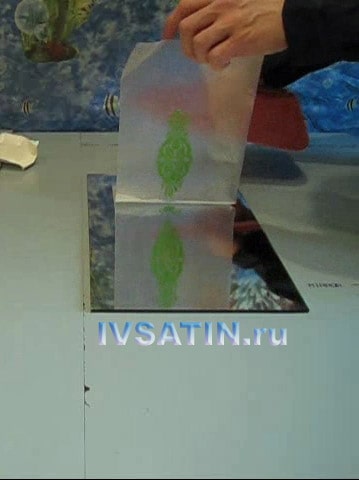
Each person himself determines which mounting film for transferring the stencil is more convenient for him to work with. To transfer a stencil with a very large number of small parts, it is necessary to choose a mounting film with an average degree of adhesion in the adhesive layer. Otherwise, after transferring the cut out stencil to the glass, you risk tearing off all the small details of the stencil (image) along with the assembly film.
Now to the next moment. You should not use a white film, otherwise you simply will not see the missed places that should be covered with paste. The best option is a bright color film.
After applying the stencil, do not rush to etch the glass immediately. Even if you carefully pressed the stencil film, this does not mean that it is well adhered. For good adhesion, it is necessary to withstand glass with glued stencil for 24-48 hours. Then you can be sure that your picture will not be blurred, and the edges will remain clear. This is especially important if you are working with a solution, not with a paste.
Now to the next moment. You should not use a white film, otherwise you simply will not see the missed places that should be covered with paste. The best option is a bright color film.
After applying the stencil, do not rush to etch the glass immediately. Even if you carefully pressed the stencil film, this does not mean that it is well adhered. For good adhesion, it is necessary to withstand glass with glued stencil for 24-48 hours. Then you can be sure that your picture will not be blurred, and the edges will remain clear. This is especially important if you are working with a solution, not with a paste.

There are times when there is no time to wait a day. Order must be made urgently. In this case, the glued stencil can be heated with an ordinary hair dryer for styling hair to a temperature of +50 degrees. After cooling; etch the glass. But this way you can only heat small areas. Large-sized glass is best left to dry for a whole day.
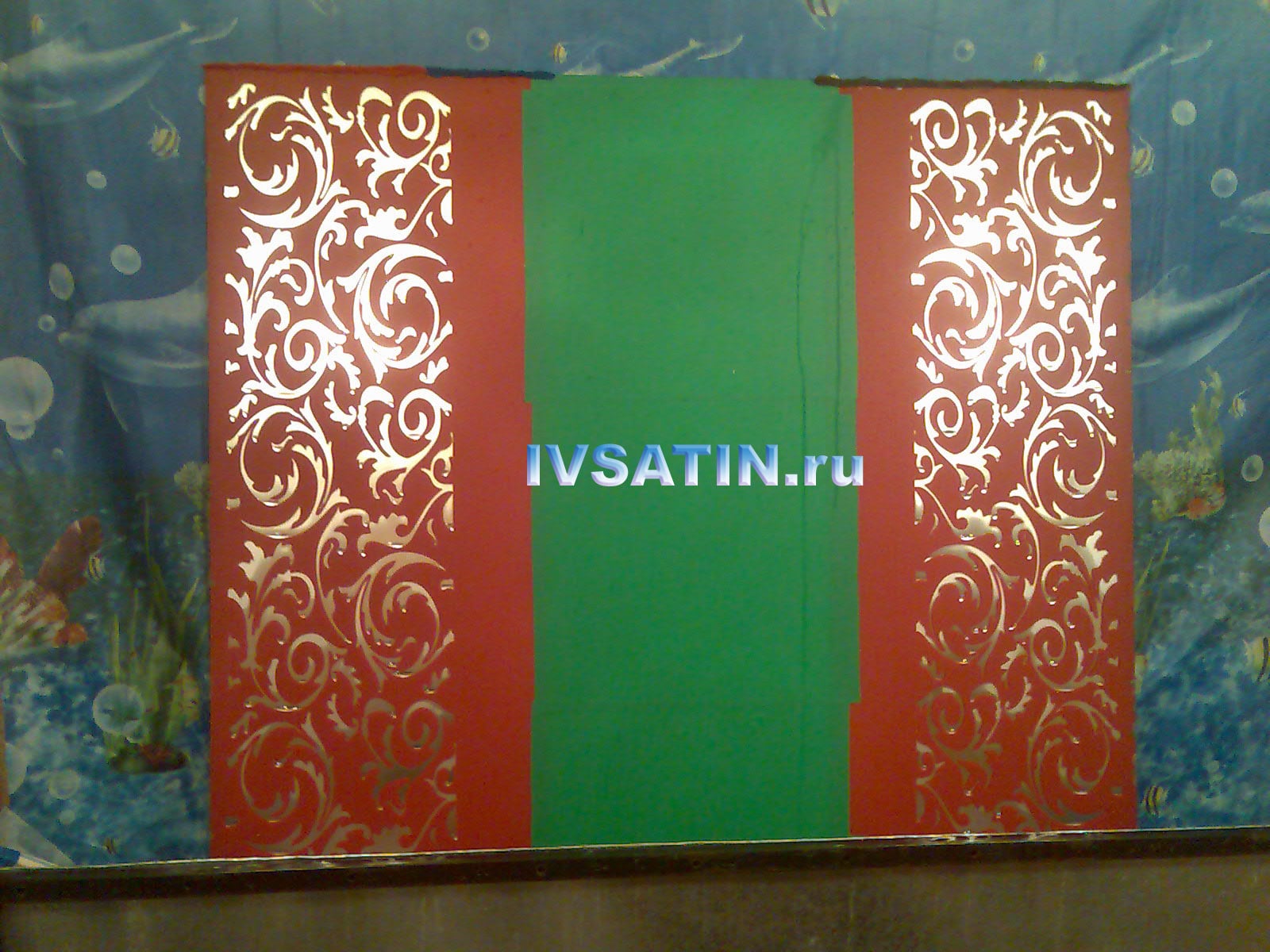
In the photo is a mirror with a glued stencil, which has already been etched with paste and washed.
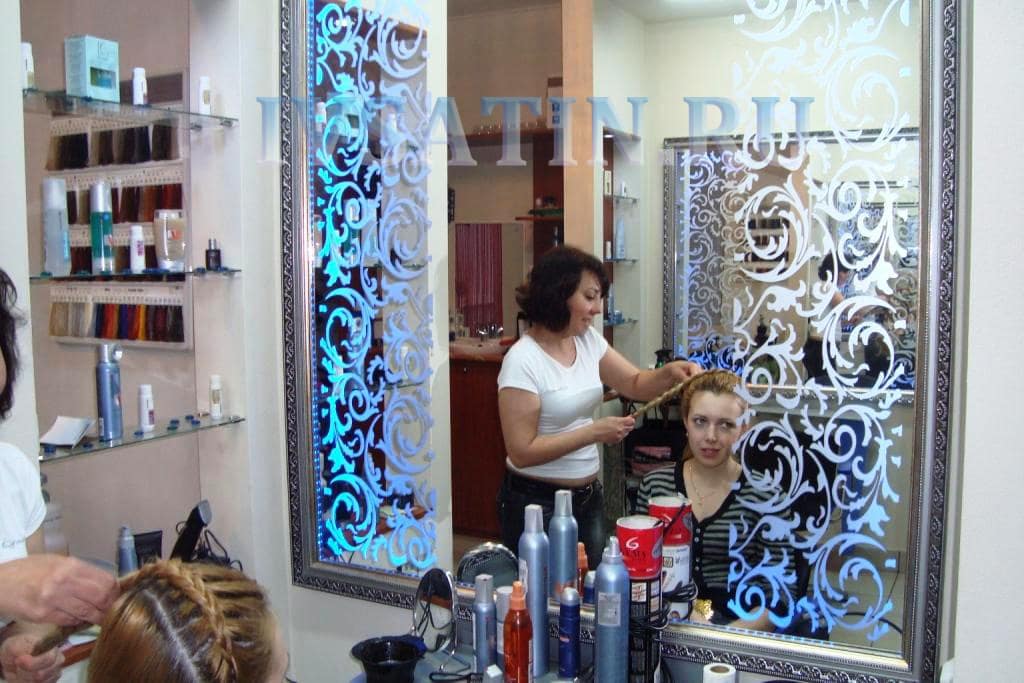
This is the finished product for a hair salon customer.







